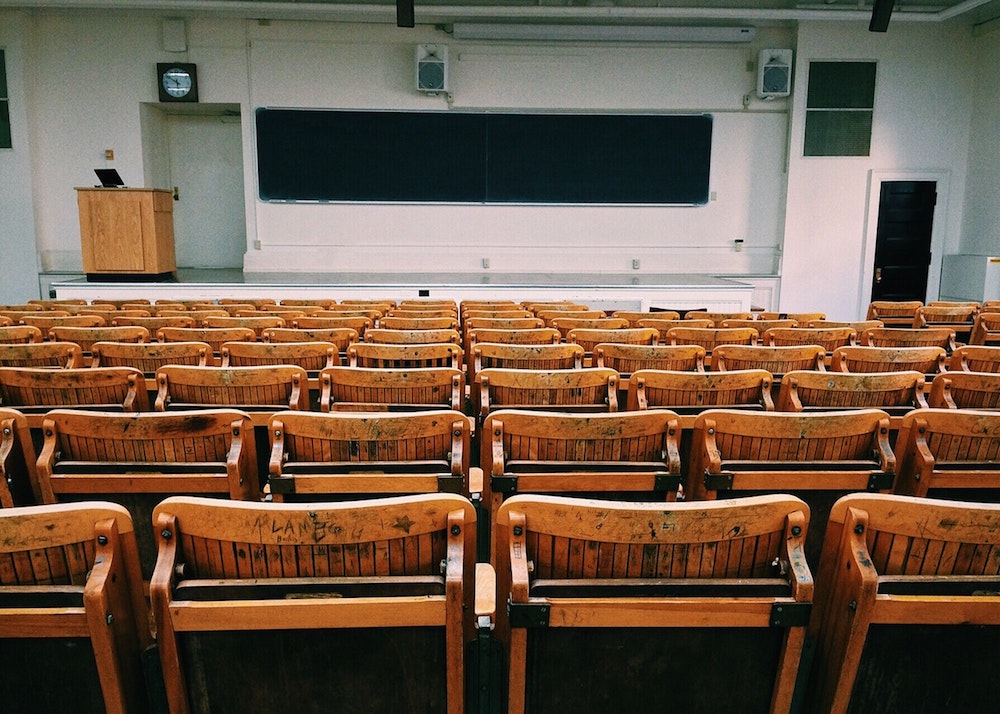Will U.S. University Students Spread COVID-19?
In the 1980s, the Reagan administration made plans for the orderly evacuation of U.S. cities in the event of an imminent nuclear war. Supposedly, city residents with odd-numbered license plates would have waited patiently for their turn to evacuate while those with even-numbered license plates went first. Anyone who has seen a crowd of shoppers at the moment a Thanksgiving sale begins can imagine how well that would have worked out.
Such plans are what sociologist Lee Clarke calls “fantasy documents.” They look perfectly rational on paper but fail to take into account the messiness of actual human behavior and the stubborn persistence of ingrained cultural patterns.
As U.S. students prepare to return to campus in the midst of a pandemic, university administrators are preparing to manage the situation with plans that have many of the hallmarks of fantasy documents.
The University of Maryland offers one example of bureaucratized fantasy work. The university’s administrators, who have been busy devising risk management plans via Zoom conference calls, have decreed that the housekeepers who clean student dorm rooms must undergo special training on the risks of COVID-19 and deep-cleaning countermeasures. So far, so good.
However, one housekeeper who contracted COVID-19 pointed out to The Washington Post that, as a Spanish-speaker, she understood only “a tiny bit” of the training. To make things worse, university administrators did not inform other housekeepers that their co-worker had contracted the virus until three days after she was admitted to the hospital; they also refused paid leave to another housekeeper who wanted to enter quarantine because she sat next to the woman who had the virus throughout the training and rode the elevator with her. The university’s plans, so good on paper, were undermined by its practices, so lax in reality.
According to The Chronicle of Higher Education, over three-quarters of U.S. universities are planning to bring some or all of their students back to campus this fall despite the fact that the pandemic is currently gathering strength across much of the country. Many of the plans now being developed by these universities to resume teaching in person while keeping cases of COVID-19 at bay are fantasy documents. They read as if they were developed by systems engineers and bureaucrats with little knowledge of actual human behavior.
To be sure, some of the preventive measures being adopted by universities are eminently sensible. Making meal service grab-and-go, spacing students in classrooms, installing plexiglass barriers, creating quarantine dorms, and taking bunk beds out of dorm rooms are all measures that will reduce rates of viral transmission.
However, university plans are strikingly naïve in other respects. For example George Washington University, where I taught until recently, has announced that it will limit gatherings in dorms and “will require everyone on campus to wear a cloth mask when in public areas or in the presence of others.” Social distancing and mask wearing would keep the virus from spreading, but how consistently will students follow these rules when they aren’t under supervision?
To answer this question, consider student compliance with another of the university’s rules, which says that “possession or use of alcohol in a housing unit is strictly prohibited” for those under the legal drinking age of 21. This rule notwithstanding, my students have told me laughingly that the consumption of alcohol has long been one of the main recreational activities on campus. Numerous studies confirm this is true for most U.S. college campuses.
From 2008–2010, my colleague David Anderson, then director of the Center for the Advancement of Public Health at George Mason University, and I spent two years doing interviews and focus groups for a study of teenage behavior around alcohol, sponsored by what is now called the Foundation for Advancing Alcohol Responsibility. What we learned has important implications for the COVID-19 risk on campus.
We found that teens fall into three main categories: “abstainers,” who followed the rules and rarely drank; “sociable drinkers,” who used alcohol as a social lubricant and behaved with some restraint; and “partiers,” who drank to get “wasted” and often pressured others to do so as well.
We found that the partiers tended to be the cool kids who created an environment in which others felt pressured to behave dangerously. In the fall, they will be the ones throwing parties behind closed doors, drinking alcohol, not wearing masks, and calling those who object “wimps.” They may be particularly concentrated in fraternities, where administrative oversight is weakest.
If evidence of this danger is needed, look no further than the 70 students from the University of Texas at Austin who, defying public health advice, chartered a plane so they could spend spring break in Mexico. Over a third returned with COVID-19.
Or the 151 cases of COVID-19 reported across 15 fraternities at the University of Washington, Seattle, this month.
Or the 47 new cases of COVID-19 in one week at the University of California, Berkeley, linked to fraternity parties.
The University of Mississippi, Oxford, has traced over 160 COVID-19 cases to fraternity rush parties.
Widespread reports that COVID-19 tends to be less serious for young people will only encourage such risky behavior.
For years, universities have marketed themselves not only as centers of learning but also as leisure centers with a hidden curriculum of partying and drinking that many students expect as part of the package, the legal drinking age notwithstanding. In order to close the viral backdoor onto campus that the partiers will open, universities would have to take measures so drastic that undergraduate life would become unrecognizable. They would have to close fraternities and, possibly, sororities; actually enforce drinking laws (social distancing goes down the more people drink); and seek out students flouting social distancing rules so as to suspend or expel them.
Americans need to think about the demographic groups whose risky behavior most endangers others.
However, strict disciplinary responses bring additional problems. Health scientist Sherry Pagoto and her graduate student Laurie Groshon, who did focus groups with students at the University of Connecticut, report that students “said unless their symptoms were severe and unusual they might not report them,” fearing automatic quarantine and public stigma. Students added that they would feel inhibited from sharing contacts if they were afraid of being disciplined for drinking at an illicit party or at a bar (using a fake ID), or if they thought they might get others into trouble.
This is consistent with one of the key findings in my research with Anderson on teen drinking: We found that “zero tolerance” laws in some communities made teens reluctant to seek help if someone at a drinking party was experiencing a medical emergency.
Over the last six months of the pandemic in the United States, it has become clear that certain demographic groups (older adults, minorities, those with underlying medical conditions) are at higher risk of dying from COVID-19; others, like some essential service workers, are more likely to be exposed. But Americans also need to think about the demographic groups whose risky behavior most endangers others. These include some churchgoers, such as evangelicals whose worship services turned into superspreader events, conservatives who regard the virus as a “hoax” and often eschew masks—and young people.
Much recent media coverage has treated young people as an undifferentiated mass. “Students being students will do what students have always done: congregate in packs, drink heavily, and comingle,” wrote one faculty commentator in Esquire, for example. But that is unfair to many students. Within student populations, it will be the “partiers” whose busy social lives and penchant for risk-taking will make them the weakest link in the human chain of prevention.
Once the virus has a foothold on campus, it will inevitably spread, since, in the words of one law professor, “when it comes to COVID-19, a college campus is like a cruise ship, a cinema multiplex, and a restaurant all rolled into one.”
Much recent news coverage has focused on the risk that infected students will pose to faculty, who tend to skew older. While this risk is real enough, we should not forget the threat that virus-carrying students will also pose to janitors, food preparers, housekeepers, and low-level administrators who do not have the option of working by Zoom. These workers often come from minority populations that are disproportionately vulnerable to COVID-19. And, surviving on low wages, they may live in crowded housing where one infected worker can take down an entire family.
In other words, universities, much like churches and bars, may become a public health threat to surrounding communities.
In a recent column predicting “disaster” if students return to campus in the fall, writer John Warner accused university administrators of “magical thinking” around COVID-19. Magic is often premised upon an inversion of the customary relationship between words and the material world, such that words have the power to shape material reality: If you say the right spell, your enemy will sicken and die, your grandmother will recover from a grave illness, or the rains will finally come. In the enchanted world of university administrators, university policy documents create new realities, and telling students not to throw parties behind closed doors and to wear masks in their dorms will make it so.
If only.



































